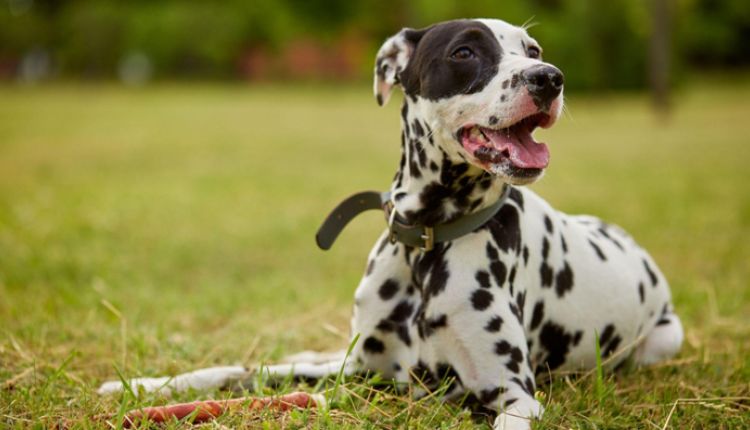Dalmatians are known for their white coats with black spots. Plus, they received a lot of fame after 101 Dalmatians, so they’ve been on everyone’s radar since about the 1960s. While they’re beloved due to their modest temperament and high level of intelligence, they’re also known for their spots.
Sure, they usually have black spots, but did you know that dalmatian spots can come in a wide variety of styles of colors? Read on to learn more about dalmatian spots and the colors and styles that they come in.
Dalmatian Breed Overview
Before we get into dalmatian spots, it’s important to learn more about the dalmatian breed.
According to Dog Academy’s Dalmatian breed guide, it’s a popular dog breed that has been around for hundreds of years. This is because of their intelligence, trainability, and ability to handle complex tasks. For example, dalmatians used to work as fire dogs, carriage pullers, and much more.
Today, dalmatians make great canine companions more than anything. Sure, they can still work well as service dogs or in police or fire work, but it’s less common to see them in these roles.
When it comes to their size, most dalmatians will reach around 30 to 70 pounds, with males being slightly larger than females. Personality-wise, dalmatians may differ but you’ll find that they tend to be loyal, protective, kind, and affectionate.
Dalmatian Spot Size and Shape Variations
Before we get into the colors, it’s important to understand how dalmatian spots vary in size and shape. On average, dalmatian spots tend to range from the size of a dime to about the size of a quarter or even a half dollar. Due to their small size, most dalmatians have dozens of spots, so you’ll rarely find one with only a few.
When it comes to the shapes and styles of dalmatian spots, you’ll find that there might be brindle patterns, stripes, and scattered spots. The density and location of dalmatian spots will always vary based on the dog.
In fact, no two dalmatians will have the same spot pattern or layout because they’re all unique.
What Color Are Dalmatian Spots?
The most common dalmatian spot colors are black and brown, or liver, but they’re not the only colors you’ll find. In fact, some dalmatians may have a combination of multiple colors.
The most common dalmatian spot color combinations include:
- White with black spots.
- White with brown/liver spots.
- White with lemon or pale-yellow spots.
- White with pale-blue spots.
- White with tan spots.
When it comes to color combinations, some tri-color dalmatians may have a combination of lemon, blue, and liver spots. Ultimately, it depends on the individual dog, and you may have to wait a few weeks before you discover all of the colors a dalmatian will have.
When Do Dalmatian Spots Develop?
Many puppies are born with different traits that develop as they get older. For example, German shepherds begin with floppy ears and round faces before developing pointy ears and longer snouts. When it comes to dalmatians, their spots don’t develop right away. Instead, they start to come in after three to four weeks.
For this reason, if you plan on buying a dalmatian from a breeder or adopting one from a shelter, it’s not a bad idea to wait a few weeks to see what their spots will look like.
While spots develop after three to four weeks they should stop developing once they reach adulthood. Therefore, if you notice any new spots or spots that start to connect, it’s possible that your dalmatian may have skin cancer. Unfortunately, dalmatians have an increased risk of skin cancer and other skin issues, so always keep an eye on their spots. Take them to the vet if you notice any color changes as well.
Our Final Thoughts on Dalmatian Spots
A dalmatian’s spots are what makes them unique. While the most common variation may be the classic black and white, brown, tan, yellow, and even blue spots can be found on dalmatians. What’s more, these spots can turn into stripes and other unique patterns.
Overall, dalmatians are great canine companions and once you know what their spots look like you can make a better choice when it’s time to adopt one.






